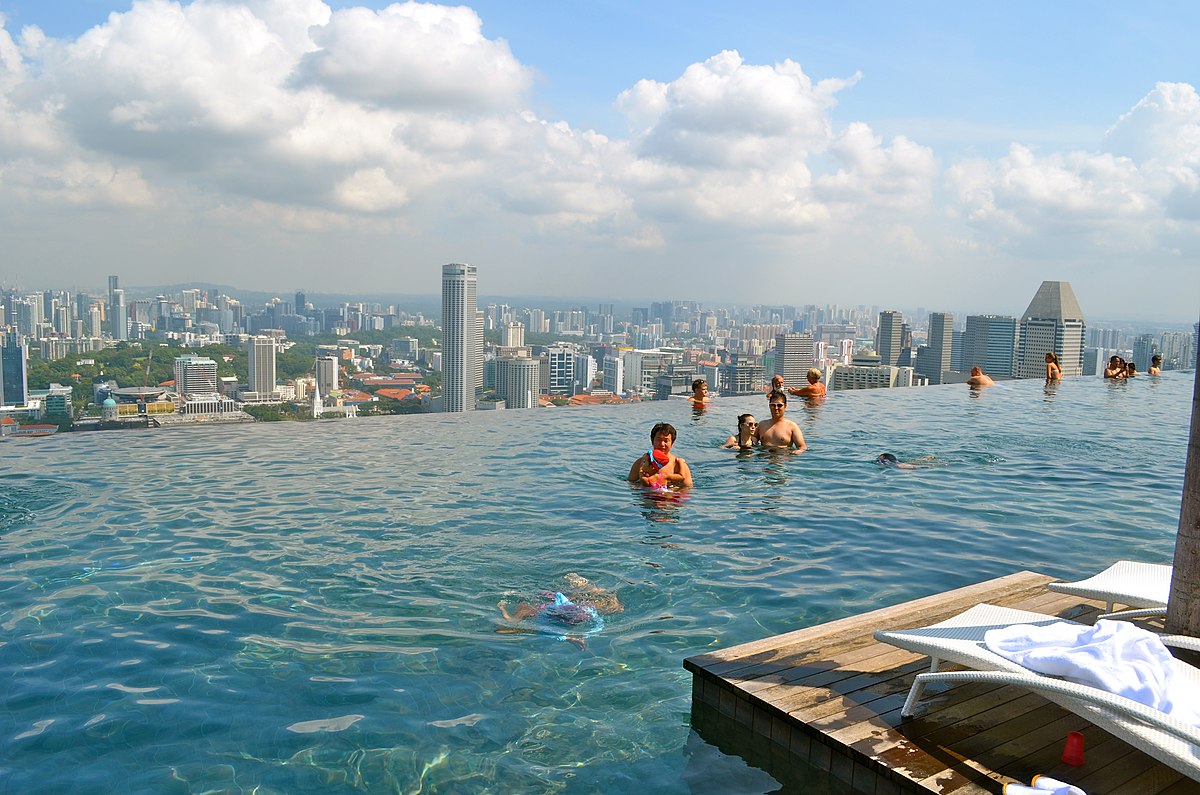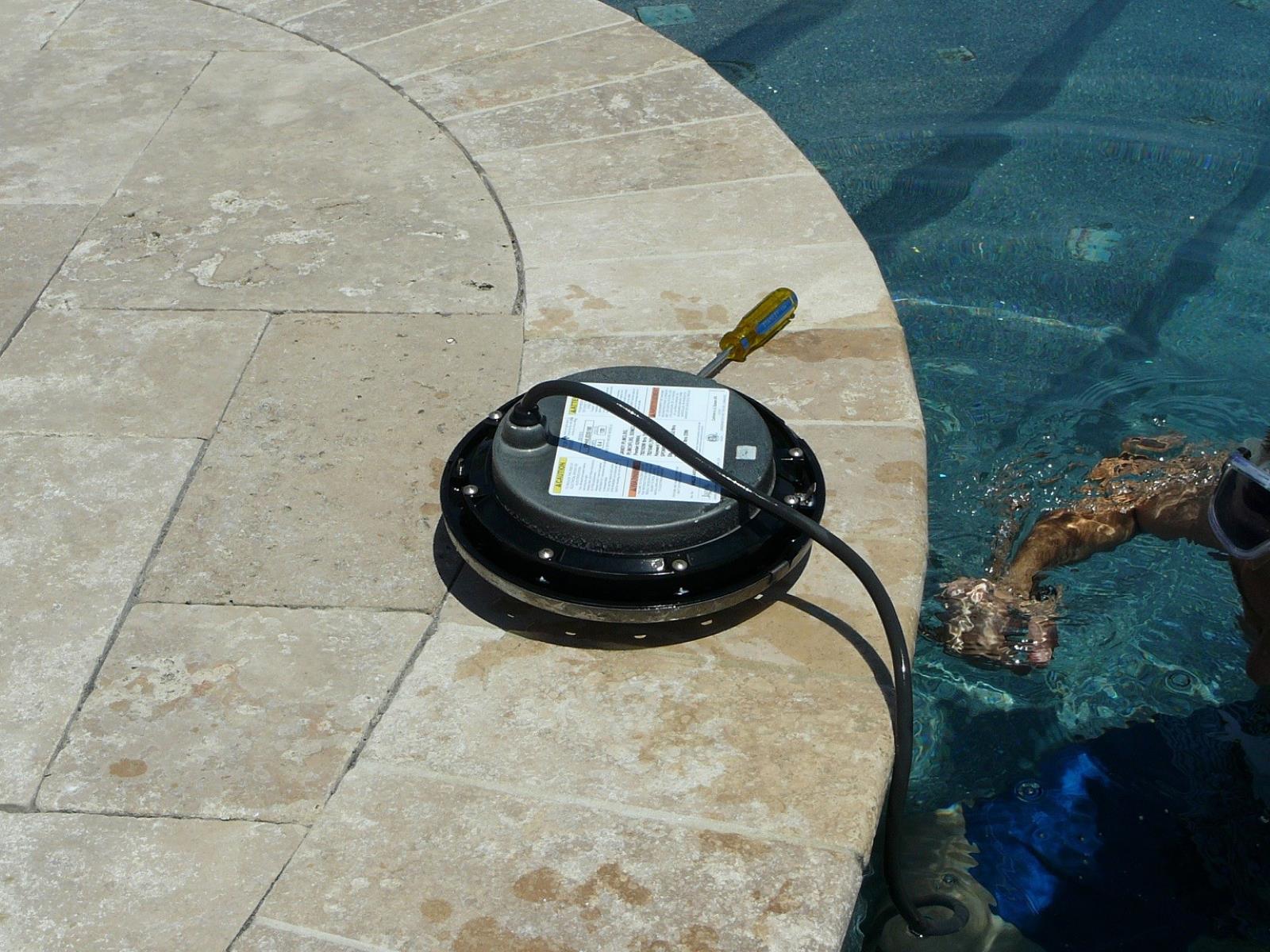Home>Gardening & Outdoor>Outdoor Recreation & Activities>How To Balance Chemicals In A Swimming Pool


Outdoor Recreation & Activities
How To Balance Chemicals In A Swimming Pool
Published: February 17, 2024
Learn how to balance chemicals in your swimming pool for a safe and enjoyable outdoor recreation and activities. Keep your pool clean and healthy with our expert tips.
(Many of the links in this article redirect to a specific reviewed product. Your purchase of these products through affiliate links helps to generate commission for Storables.com, at no extra cost. Learn more)
Introduction
Maintaining a clean and safe swimming pool is essential for the enjoyment and well-being of all who use it. One crucial aspect of pool maintenance is the proper balance of chemicals in the water. This ensures that the water remains sanitary, clear, and gentle on the skin and eyes.
Balancing the chemicals in a swimming pool involves adjusting the pH, alkalinity, and chlorine levels to their optimal ranges. When these levels are within the recommended parameters, the pool water is not only inviting but also safe for swimming.
In this comprehensive guide, we will delve into the importance of balancing chemicals in a swimming pool and provide detailed insights into testing the water and making necessary adjustments. By the end of this article, you will have a clear understanding of the steps required to maintain a perfectly balanced pool, allowing you to enjoy a refreshing and hygienic swimming experience.
Key Takeaways:
- Maintaining a balanced pool with the right chemicals keeps the water safe, clean, and comfortable for swimming. Regular testing and adjustments help create an inviting and hygienic environment for everyone to enjoy.
- In addition to pH, alkalinity, and chlorine levels, factors like stabilizer levels, calcium hardness, and regular maintenance play a crucial role in keeping the pool healthy and enjoyable. Consistent monitoring and adjustments ensure a clean and clear swimming experience.
Read more: How To Empty A Swimming Pool
Importance of Balancing Chemicals in a Swimming Pool
Maintaining the proper chemical balance in a swimming pool is crucial for several reasons. Firstly, balanced chemicals ensure the safety of the water, protecting swimmers from harmful bacteria and algae. When the chemical levels are within the recommended ranges, the risk of waterborne illnesses and infections is significantly reduced, providing a safe and healthy environment for all pool users.
Furthermore, balanced chemicals contribute to the overall cleanliness and clarity of the pool water. Properly balanced pH and alkalinity levels help prevent cloudy water, scale formation, and corrosion of pool surfaces and equipment. This not only enhances the visual appeal of the pool but also prolongs the lifespan of its components, saving time and money on maintenance and repairs.
In addition to safety and cleanliness, balanced chemicals also play a vital role in ensuring the comfort of swimmers. Properly maintained pH and alkalinity levels prevent skin and eye irritation, creating a more enjoyable swimming experience for everyone. Unbalanced water can cause discomfort, such as dry, itchy skin and red, irritated eyes, leading to dissatisfaction and reduced pool usage.
Moreover, balanced chlorine levels are essential for effective sanitization. Chlorine acts as a powerful disinfectant, eliminating harmful bacteria and contaminants from the water. However, excessive chlorine can cause skin and eye irritation, while insufficient levels may result in inadequate sanitation. Therefore, maintaining the appropriate chlorine concentration is essential for both safety and comfort.
Overall, the importance of balancing chemicals in a swimming pool cannot be overstated. It is a fundamental aspect of pool maintenance that directly impacts the safety, cleanliness, and comfort of the water. By understanding and addressing the significance of chemical balance, pool owners can create an inviting and hygienic environment for swimmers to enjoy, ensuring a positive and satisfying experience for all.
Testing the Water
Testing the water in a swimming pool is the initial step in maintaining balanced chemical levels. Regular testing is essential to ensure that the pH, alkalinity, and chlorine levels are within the recommended ranges. This process involves using test kits or strips specifically designed for pool water analysis.
To begin, it's important to follow the manufacturer's instructions for the testing kit or strips. Typically, the testing process involves collecting a water sample from the pool at a sufficient depth, away from the skimmer and return jets. The sample is then tested for pH, alkalinity, and chlorine levels.
The pH level indicates the acidity or basicity of the water. The ideal pH range for a swimming pool is between 7.4 and 7.6. A pH below 7.4 indicates acidic water, while a pH above 7.6 indicates basic water. Maintaining the pH within the recommended range is crucial for preventing corrosion of pool surfaces and equipment, as well as minimizing skin and eye irritation.
Alkalinity acts as a buffer for the pH, helping to stabilize and maintain it within the desired range. The recommended alkalinity level for a swimming pool is between 100 and 150 parts per million (ppm). Proper alkalinity levels prevent rapid fluctuations in pH, ensuring a more stable and comfortable swimming environment.
Chlorine is a primary sanitizer in pool water, effectively eliminating bacteria and contaminants. The ideal chlorine level for a swimming pool is between 1 and 3 ppm. Testing the chlorine level is crucial, as insufficient chlorine can lead to inadequate sanitation, while excessive chlorine can cause skin and eye irritation.
Once the water is tested, the results provide valuable insights into the current chemical balance. If any of the levels are outside the recommended ranges, adjustments must be made to restore balance and ensure the water is safe, clean, and comfortable for swimming.
In the next sections, we will explore the specific steps for adjusting pH, alkalinity, and chlorine levels to maintain a perfectly balanced swimming pool, allowing for a refreshing and hygienic swimming experience.
Adjusting pH Levels
Maintaining the pH level within the recommended range is essential for preserving the overall quality of the pool water. If the pH deviates from the optimal range of 7.4 to 7.6, corrective measures must be taken to restore balance.
To lower the pH level, muriatic acid or sodium bisulfate can be used. These chemicals are added to the pool in small increments, allowing time for circulation and retesting between additions. It's crucial to follow the manufacturer's instructions and safety guidelines when handling and adding these chemicals to the water.
Conversely, if the pH needs to be raised, sodium carbonate or soda ash is commonly used. Similar to lowering the pH, these chemicals should be added gradually, allowing for thorough mixing and retesting to prevent overcorrection.
It's important to note that adjustments to the pH level should be made incrementally, as drastic changes can lead to further imbalances and potential damage to pool surfaces and equipment. Regular testing during the adjustment process is vital to ensure that the pH stabilizes within the optimal range.
Factors such as rainfall, pool usage, and the introduction of new water can impact the pH level, necessitating periodic testing and adjustments. By consistently monitoring and maintaining the pH level, pool owners can ensure a comfortable and safe swimming environment for all users.
In summary, maintaining the pH level within the recommended range is crucial for preserving the integrity of the pool water. By understanding the appropriate methods for adjusting pH levels and the importance of gradual corrections, pool owners can effectively manage the chemical balance, promoting a clean, clear, and inviting swimming pool for all to enjoy.
Test your pool water regularly to ensure the pH, alkalinity, and chlorine levels are balanced. Adjust as needed to keep the water clean and safe for swimming.
Adjusting Alkalinity Levels
Maintaining the proper alkalinity levels in a swimming pool is essential for stabilizing the pH and preventing rapid fluctuations that can lead to water imbalances. When the alkalinity deviates from the recommended range of 100 to 150 parts per million (ppm), corrective measures must be taken to restore equilibrium and ensure a harmonious swimming environment.
To increase alkalinity, sodium bicarbonate, also known as baking soda, is commonly used. This compound serves as a reliable alkalinity booster, effectively raising the total alkalinity without significantly impacting the pH level. When adding sodium bicarbonate, it is important to disperse it evenly across the pool surface and allow for thorough mixing to ensure uniform distribution.
Conversely, if the alkalinity needs to be lowered, muriatic acid can be utilized. This acid not only reduces alkalinity but also lowers the pH level. When adding muriatic acid, caution must be exercised, as it is a potent chemical that should be handled with care. It is essential to follow safety guidelines and manufacturer's instructions to prevent potential hazards and ensure proper application.
Adjusting alkalinity levels should be approached gradually, with small increments of the chosen chemical being added to the water. After each addition, thorough mixing and circulation are necessary to achieve uniform distribution and allow the chemical to interact with the pool water. Subsequent testing is crucial to monitor the progress and ensure that the alkalinity stabilizes within the recommended range.
Factors such as heavy rainfall, frequent pool usage, and the introduction of new water can influence alkalinity levels, necessitating regular testing and adjustments. By maintaining the alkalinity within the optimal range, pool owners can effectively stabilize the pH and create a more balanced and comfortable swimming environment for all users.
In summary, adjusting alkalinity levels is a critical aspect of maintaining a balanced swimming pool. By understanding the appropriate methods for increasing or decreasing alkalinity and the importance of gradual adjustments, pool owners can effectively manage the chemical balance, promoting a clean, clear, and inviting swimming pool for all to enjoy.
Read more: How To Cover A Swimming Pool
Adjusting Chlorine Levels
Maintaining the appropriate chlorine levels in a swimming pool is paramount for effective sanitization and ensuring a safe and hygienic environment for swimmers. Chlorine serves as a powerful disinfectant, effectively eliminating harmful bacteria, algae, and other contaminants from the water. However, maintaining the chlorine level within the recommended range of 1 to 3 parts per million (ppm) is crucial, as insufficient chlorine can lead to inadequate sanitation, while excessive chlorine can cause skin and eye irritation.
When adjusting chlorine levels, it's essential to consider the various factors that can impact the concentration of chlorine in the pool water. Factors such as sunlight exposure, pool usage, and environmental conditions can influence the rate at which chlorine dissipates from the water. Understanding these factors is vital for making accurate adjustments to maintain the desired chlorine level.
To increase the chlorine level in the pool, the addition of a chlorine-based shock treatment or granular chlorine is commonly employed. These products provide a concentrated dose of chlorine, effectively raising the overall chlorine level in the water. It's important to follow the manufacturer's guidelines for the appropriate dosage based on the pool size and current chlorine levels. After adding the chlorine, thorough mixing and circulation are necessary to ensure uniform distribution and effective sanitization.
Conversely, if the chlorine level needs to be decreased, reducing the use of chlorine-based products and allowing for natural dissipation can help lower the concentration over time. Additionally, the use of a chlorine neutralizer can be considered to reduce the chlorine level more rapidly. Care should be taken to follow the instructions for the neutralizer and allow for proper mixing to achieve the desired reduction in chlorine concentration.
Regular testing and monitoring of the chlorine level are essential to ensure that it remains within the recommended range. Periodic adjustments may be necessary based on environmental factors, pool usage, and the introduction of new water. By maintaining the chlorine level within the optimal range, pool owners can effectively safeguard the water against harmful contaminants while providing a comfortable and safe swimming environment for all users.
In summary, adjusting chlorine levels is a critical aspect of maintaining a balanced and sanitary swimming pool. By understanding the appropriate methods for increasing or decreasing chlorine levels and the importance of regular testing and adjustments, pool owners can effectively manage the chemical balance, promoting a clean, clear, and inviting swimming pool for all to enjoy.
Other Considerations
In addition to the primary factors of pH, alkalinity, and chlorine levels, several other considerations play a significant role in maintaining a well-balanced and inviting swimming pool. These considerations encompass various aspects of pool maintenance and water quality, contributing to the overall health, safety, and enjoyment of the swimming environment.
-
Stabilizer Levels: Cyanuric acid, also known as pool stabilizer, helps protect chlorine from degradation due to sunlight exposure. Maintaining the appropriate stabilizer level, typically between 30 and 50 ppm, is crucial for maximizing the effectiveness of chlorine and prolonging its sanitizing capabilities.
-
Calcium Hardness: The calcium hardness of pool water refers to the concentration of dissolved calcium ions. Proper calcium hardness, typically between 200 and 400 ppm, helps prevent corrosion of pool surfaces and equipment, as well as the formation of scale. Regular testing and adjustments are necessary to maintain the ideal calcium hardness level.
-
Water Circulation and Filtration: Adequate water circulation and filtration are essential for distributing chemicals evenly throughout the pool and removing debris, contaminants, and microorganisms. Properly maintained pumps, filters, and skimmers contribute to the overall cleanliness and clarity of the water.
-
Regular Maintenance: Routine maintenance tasks, such as skimming the surface, vacuuming the pool floor, and cleaning the skimmer and pump baskets, are essential for preventing the buildup of debris and maintaining optimal water quality. Additionally, regular backwashing of the filter and cleaning of the filter media help ensure efficient filtration.
-
Environmental Factors: Environmental elements, such as rainfall, temperature fluctuations, and sunlight exposure, can impact the chemical balance of pool water. Pool owners should consider these factors when making adjustments to chemical levels and be mindful of their potential effects on water quality.
-
Professional Testing and Service: Periodic professional testing of pool water by certified technicians can provide in-depth insights into water chemistry and help identify any underlying issues. Additionally, professional servicing of pool equipment and systems ensures optimal functionality and performance.
By addressing these additional considerations, pool owners can maintain a well-balanced and inviting swimming pool environment. Regular monitoring, testing, and adjustments, coupled with proper maintenance and attention to environmental factors, contribute to the overall health, safety, and enjoyment of the pool for all users.
Conclusion
In conclusion, maintaining a perfectly balanced swimming pool with the appropriate chemical levels is essential for ensuring the safety, cleanliness, and comfort of the water. By understanding the significance of pH, alkalinity, and chlorine levels, pool owners can effectively manage the chemical balance, creating an inviting and hygienic environment for swimmers to enjoy.
The process of balancing chemicals in a swimming pool begins with regular testing of the water to assess the pH, alkalinity, and chlorine levels. These tests provide valuable insights into the current chemical balance and serve as the foundation for making necessary adjustments. By utilizing test kits or strips designed for pool water analysis, pool owners can gain a comprehensive understanding of the water's chemical composition.
Adjusting the pH, alkalinity, and chlorine levels involves the careful addition of specific chemicals to restore balance within the recommended ranges. Whether it's using muriatic acid to lower the pH, sodium bicarbonate to increase alkalinity, or chlorine-based products to adjust chlorine levels, the process requires precision and attentiveness. Regular testing during the adjustment process is crucial to ensure that the chemical levels stabilize within the optimal ranges.
Furthermore, maintaining a well-balanced swimming pool extends beyond the primary chemical factors. Considerations such as stabilizer levels, calcium hardness, water circulation and filtration, regular maintenance, environmental factors, and professional testing and service all contribute to the overall health and enjoyment of the pool environment.
By addressing these considerations and consistently monitoring and adjusting chemical levels, pool owners can create a clean, clear, and inviting swimming pool that prioritizes the safety and comfort of all users. A well-maintained pool not only enhances the overall experience for swimmers but also prolongs the lifespan of pool components, reducing the need for extensive maintenance and repairs.
In essence, the proper balance of chemicals in a swimming pool is a fundamental aspect of pool maintenance that directly impacts the well-being and satisfaction of all who use the pool. By following the guidelines outlined in this comprehensive guide and staying attentive to the chemical balance, pool owners can create a refreshing and hygienic swimming environment that promotes enjoyment and relaxation for years to come.
Frequently Asked Questions about How To Balance Chemicals In A Swimming Pool
Was this page helpful?
At Storables.com, we guarantee accurate and reliable information. Our content, validated by Expert Board Contributors, is crafted following stringent Editorial Policies. We're committed to providing you with well-researched, expert-backed insights for all your informational needs.















0 thoughts on “How To Balance Chemicals In A Swimming Pool”